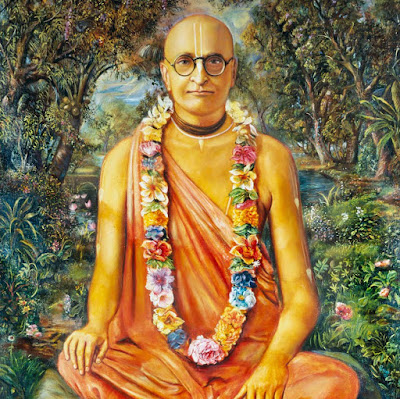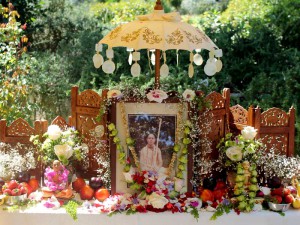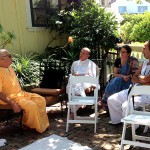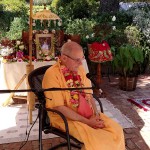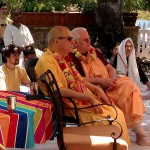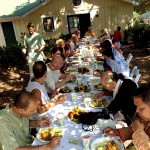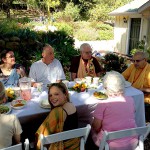Tuesday, July 2nd, 2013
→ The Walking Monk
Toronto, Ontario
I thought the figure was quite low and revealing. I took a walk and passed by the major police station for Metro Toronto on College St. The death toll for Metro Toronto involving motorists/pedestrians was 13 for the year 2012. It would not be a boasting number but it has already reached the figure of 13 for this year. Unfortunate because we’re only halfway through the year.
Fatalities involving vehicles and pedestrians is everyone’s pet peeve and I’m sure that in the days of horse and buggy collisions and death scenarios were also a reality in the good ‘ol days. In any event the numbers tell that we have relative safety. We all die by some means. The mortality rate is 100%.
Personally I’m looking forward to the summer events of Ratha Yatra and to being an eager participant in the Montreal version this weekend. Foot travellers, chariots and on wheels will be interspersed on streets this season. The chariots do not operate on motor power but by a rope that is sometimes strenuously and sometimes less so pulled by pedestrians of devotion.
Author Adi Sankaracharya writes in the famed song, “Jagannastakam”:
“When Sri Jagannatha (Lord of the Universe) moves along the road on His Rathayatra car at every step large assemblies of brahmanas loudly chant prayers and sing songs for His pleasure.”
The event is basically enchanting -- full of charm and so little harm.
[For info. on the Toronto Festival of Chariots, contact www.festivalofindia.ca, or 1-888-535-FEST]
11 KM

